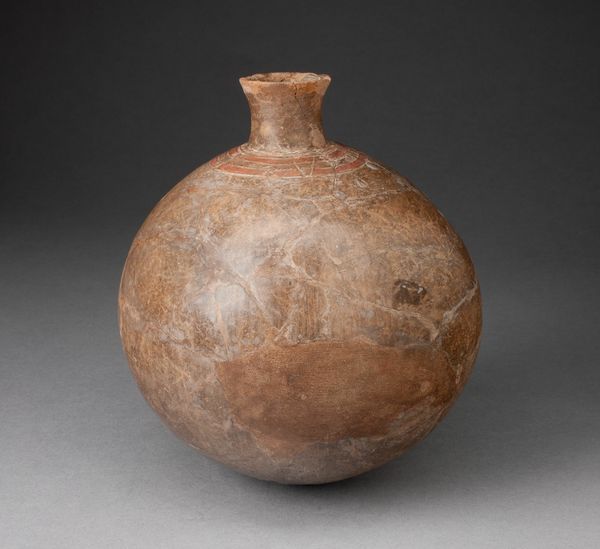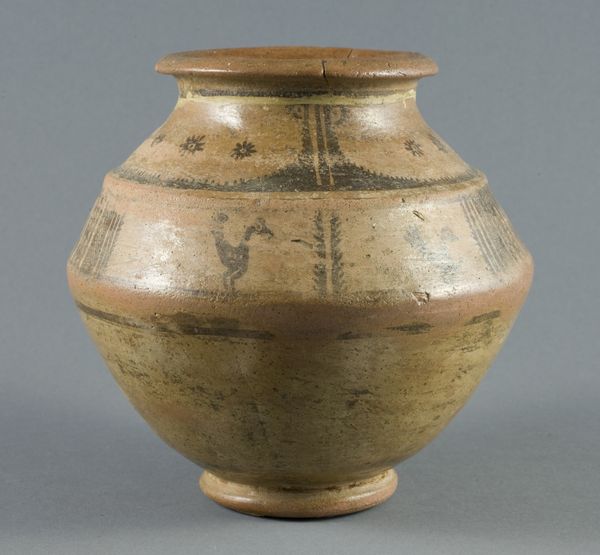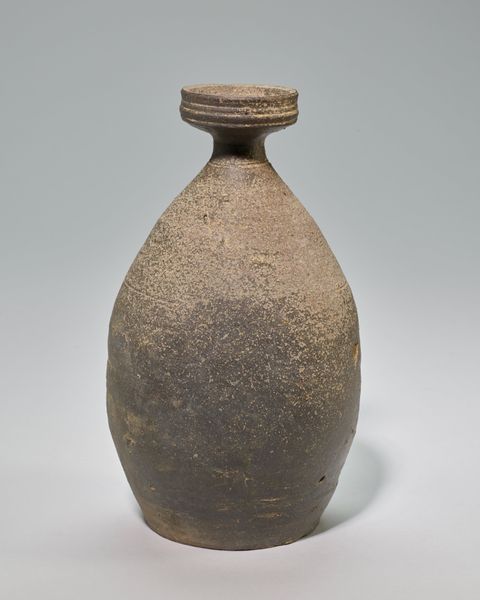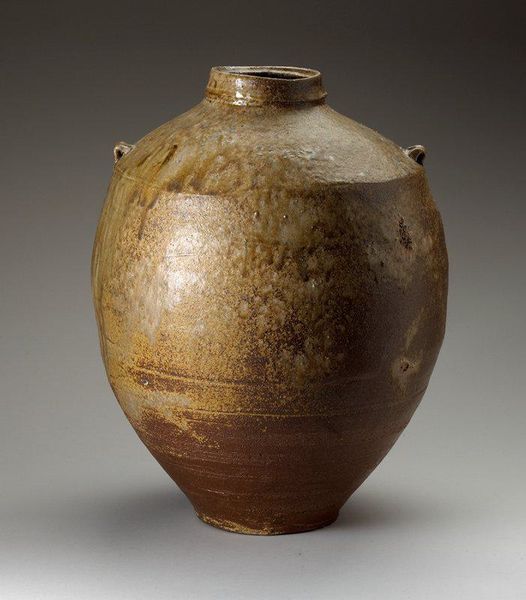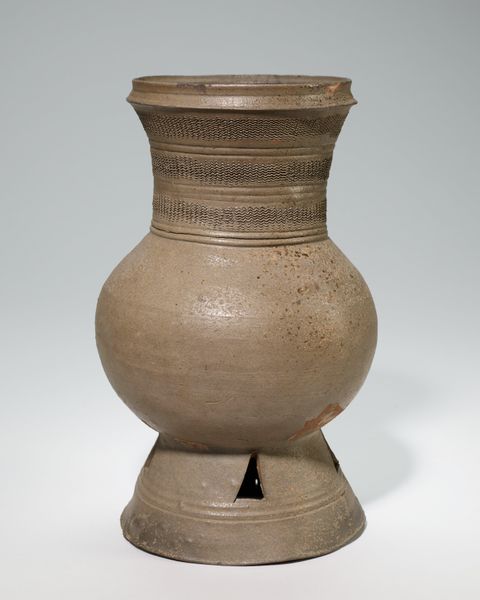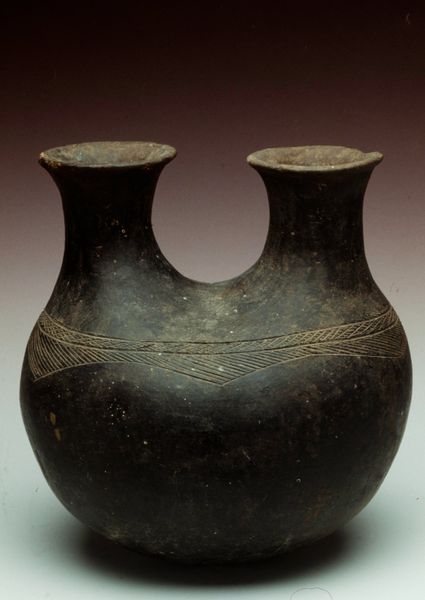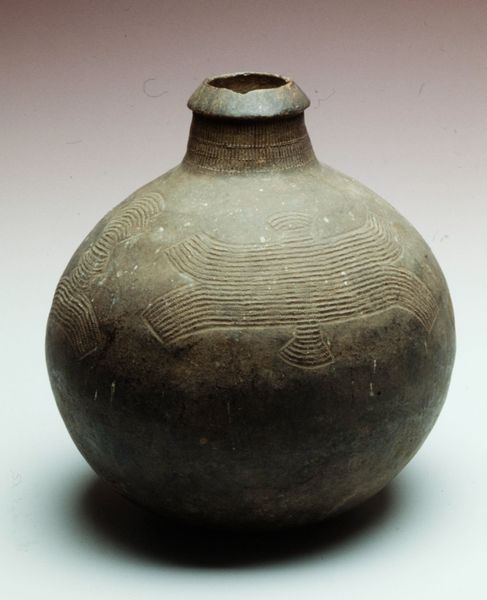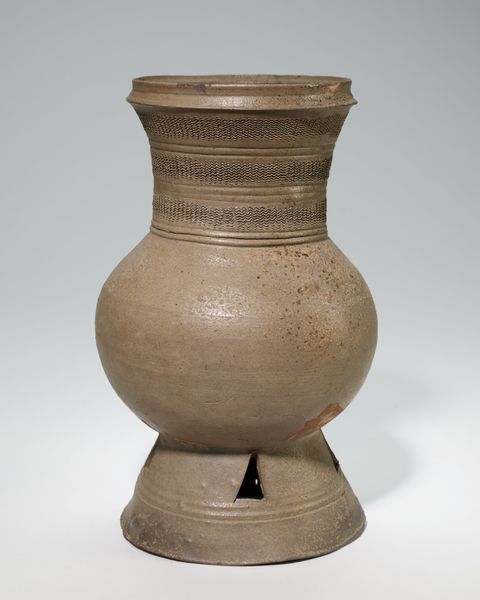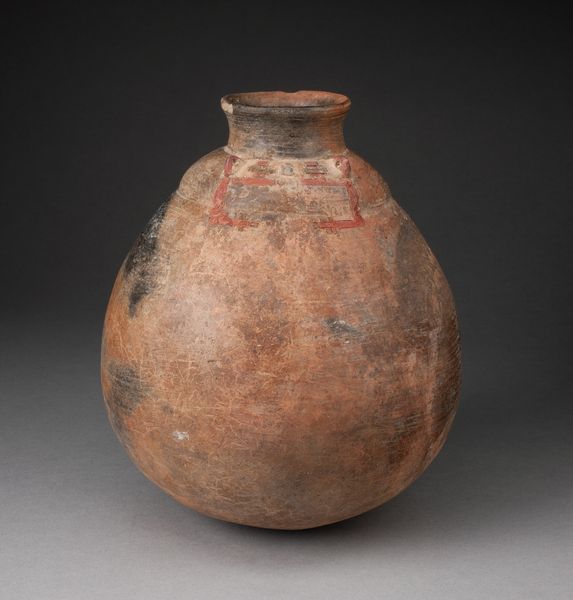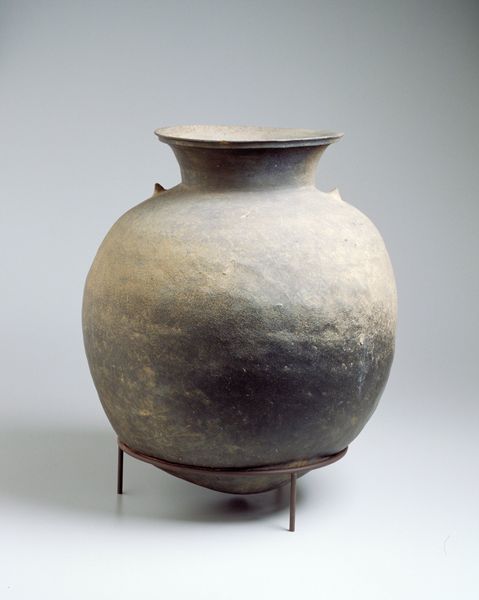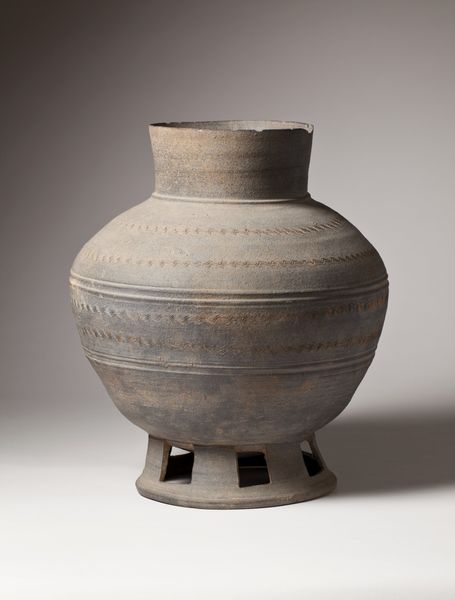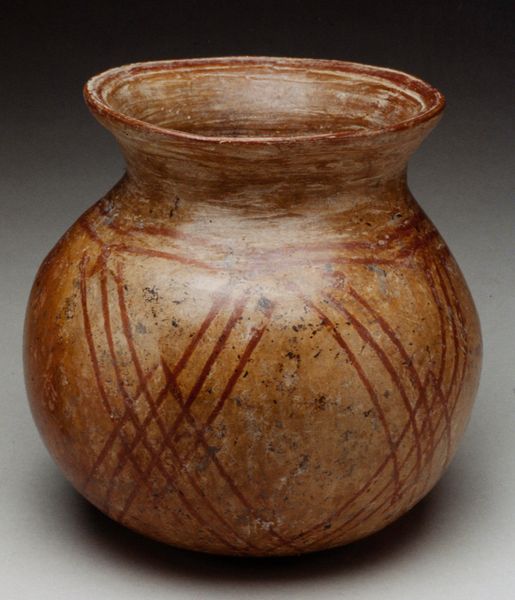
ceramic, earthenware
#
asian-art
#
ceramic
#
earthenware
#
ancient-mediterranean
Dimensions: 11 3/16 x 7 1/2 in. (28.42 x 19.05 cm)
Copyright: Public Domain
Editor: This is a ceramic jar, made of earthenware, dating back to around 600, attributed to the Ban Chiang culture. It feels really ancient, and the patterned texture along the upper half is striking. How do you interpret this piece? Curator: Let's think about the process itself. This wasn't simply decoration; it's about labor. Consider the potter: they weren't just creating an object but shaping earth, fire, and their own energy. Look closely at those patterns. Don’t you wonder about the tools used? How was the clay sourced? How were these pots fired, and who was doing this work? Editor: That’s interesting. I hadn’t considered it as work, rather than simply a design choice. Curator: Precisely! We should consider the wider social context of its production and function. Earthenware speaks to daily life, doesn't it? What might this have been used for, and by whom? Was it a communal effort, a specialized craft, and what’s the implication of access to earthenware in this early society? Editor: So, it becomes less about the aesthetics and more about the production and consumption of this material. Was it high value, or quite common? Curator: Exactly. Thinking about the labor, resources, and daily utility, all those questions help break down traditional assumptions about what constitutes "art," doesn't it? Editor: Definitely, viewing it through a materialist lens makes you question every step of the way. It gives the piece new dimensions. Curator: It makes you appreciate the profound meaning held within this ‘simple’ jar. We tend to divorce ‘fine art’ from its modes of creation, consumption, and cultural embeddedness, which creates all sorts of inaccurate value judgments. I'm glad this object made us rethink it today!
Comments
No comments
Be the first to comment and join the conversation on the ultimate creative platform.
